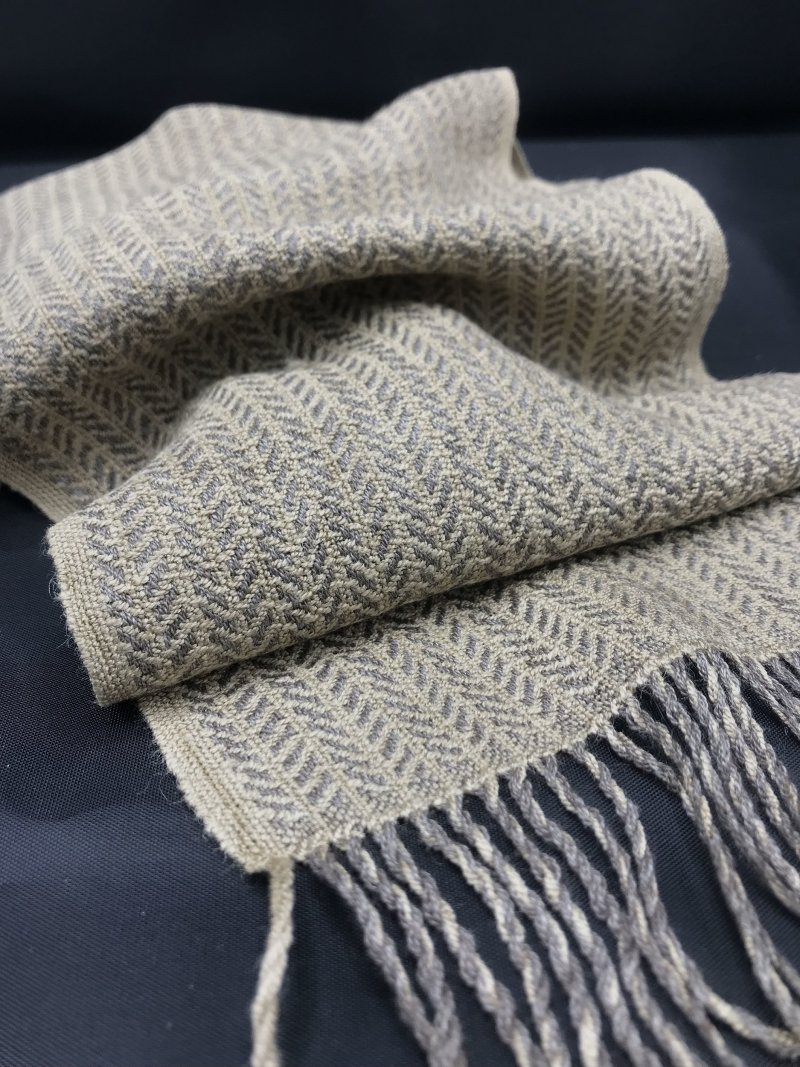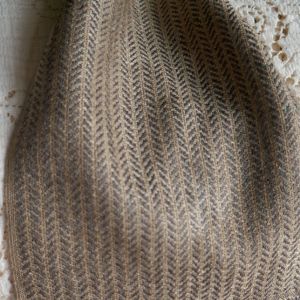
Beautiful and luxurious yarns bring sophisticated elegance to simple structures. One outstanding example is Judy Stewart's Natural Elegance in Handwoven magazine May/June 2022 issue, page 59-61.
Judy combined Carmelina (30/2 Muga silk) and Silken Fog (30/2, blend of 50% bombyx silk/50% yak). These are two of my favorite yarns--I can't believe it took this long to combine them! Both yarns are the natural color of the silk and yak.
Judy followed an old weaving adage: the more luxurious the yarn, the simpler the weave structure. Judy decided to use a classic 6-shaft chevron twill, but added a 2-end plain weave at the end of each twill run, using all 8 shafts on her loom. This unique touch elevates a chevron twill to something extra special.
Judy is an amazing weaver and is always willing to sample to get everything "just right" before embarking on her project. Judy preferred an "open sett" of 26 EPI (ends per inch).
When weaving, it's easy to "pack in" the weft when the sett is open, so Judy sampled various PPI (picks per inch). Judy found that while 40 PPI was ok, she really preferred the drape and hand of 36 PPI.
Judy created a scarf that's soft with natural elegance. It will be loved by your gift receipient (including you!) To see the kit, CLICK HERE
Muga silk from India
The Antherea assama silkworm is a ‘cousin’ to the silk worm producing Tussah silk. The caterpillar producing muga silk eats leaves from different trees [Som (machilus bobycine) or Soalu (litsaea polyantha)] but those leaves also contain tannin, which is what gives the silk it's unique color.
Muga silk is naturally a rich gold color and was traditionally reserved for royalty.
This silkworm is found in the microclimate in the Assam region of India and is relatively rare.
Silken Fog (50% Silk/ 50% Yak)
Yak is a valued beast of burden living above the snowline in the Himalayan Mountains. It provides meat, hair and hides to the people living there. Its long, shaggy coat reaches to the ground.
The soft undercoat is combed out at the time of the spring molt. The fiber length varies from one to one-and-a-half inches.
Separating the guard hairs from the down is a slow, necessary process before spinning the fiber, which is nearly as soft as cashmere. The longer hair is used in rope making, for mats, sacks and covering huts. The undercoat of the yak keeps it warm in extreme cold, so the fiber is warm and lightweight, with a luster.
Silk lends the delicate yak down substance, sheen and elasticity. And the yak makes the silk become softer and warmer, and creates a lovely soft brown/grey color.


